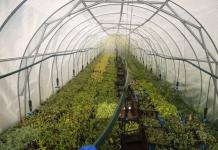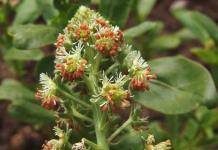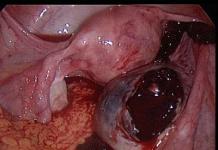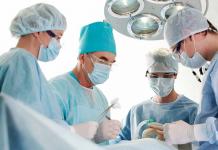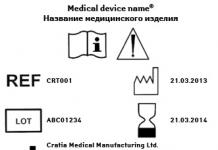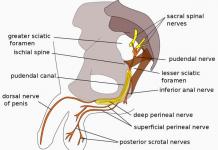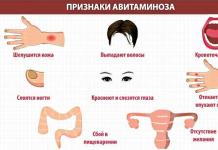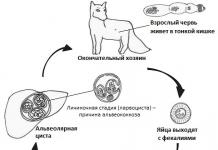In my previous post, I touched on the topic of intestinal microflora. In Russia, it sounds especially loud, since not only manufacturers of fermented milk products and probiotic preparations continue to speculate on it, but also practitioners. The favorite Russian myth-diagnosis "dysbiosis" (in the latest fashion, "dysbiosis") remains practically indestructible.
Nowhere in developed countries such a disease simply does not exist. Neither the bourgeois nor the brothers from the poorer countries want to suffer from it, and neither the bourgeoisie nor their brothers from the poorer countries want to be treated for it. There is no such ailment in the international classification of diseases (ICD-10), in accordance with which diagnoses should be made in Russia. There is no mention of "dysbiosis" in the normative document of the Ministry of Health of the Russian Federation "Standards (protocols) for the diagnosis and treatment of diseases of the digestive system", which should be followed by all our doctors.
Nevertheless, as a tribute to the dense soviet traditions, "dysbiosis" continues to leave the language of many practicing doctors, especially pediatricians. As before, the standards of medical examinations of babies include testing feces for "dysbiosis". At the same time, it has long been known that looking for a correlation between the composition of the flora in the feces and its real ratio in the crypts of the intestine is like guessing on coffee grounds. Firstly, the basis of the intestinal flora is formed by bacteroids, which do not grow on nutrient media. Second, the ratio of bacteria at the exit has very little to do with what lives in the gut. Thirdly, all the time while you collect and carry your priceless feces to the laboratory, life in them does not stop, and after a few hours the entire flora and fauna of feces is radically altered. Therefore, all conclusions about the "predominance of pathogenic flora over normal" in such an analysis are simply ridiculous.
In general, we all need to understand that there is no such independent disease as dysbiosis in nature.
There are only a number of temporary conditions of the body (the same viral diarrhea or long-term antibiotic therapy), which can lead to a temporary imbalance of the normal flora. Moreover, this imbalance, as a rule, is not qualitative, but quantitative. As an example, I can cite the overgrowth of the bacteria Clostridium difficile with the development of pseudomembranous colitis against the background of prolonged antibiotic therapy.
More often than not, abdominal discomfort is caused not by mythical diseases, but by a completely real rebellion of the body against any cola and other poppy stuff. If your baby's belly does not stop "noise and din", first of all look at what he eats.
In adults, "dysbiosis" often hides irritable bowel syndrome, syndrome of bacterial overgrowth in the small intestine, lactase deficiency, as well as other undiagnosed conditions in which the balance of intestinal flora is disturbed. These disorders need to be treated by addressing the cause of the imbalance, not the imbalance itself, which is only a consequence.
As I explained in the column on intestinal flora, probiotic bacteria can only become transit colonists, while the goal of all therapeutic measures is to restore the balance of OWN microflora.
Among the numerous drugs for the correction of dysbiosis, I want to highlight a particularly absurd class of drugs - bacteriophages. Bacteriophages are viruses that infect bacteria. Scientists once suggested using them against staphylococci, Escherichia coli and other pathogens of diarrhea. However, studies have shown that bacteriophages are completely destroyed in the stomach, and such drugs have long been abandoned all over the world. More precisely, all over the world, except for Russia - in our country these pseudo-drugs are popular to this day, and ineffective drugs are especially good at treating non-existent dysbacteriosis.
If your doctor confidently declares that your microflora is unbalanced, and you are already "suffering from dysbiosis" with might and main, do not panic! Try to find a competent specialist who will not juggle with non-existent diagnoses and prescribe fuflomycins, but will deal with generally accepted diagnostics that will distinguish infectious or organic pathology of the intestinal tract from physiological and psychosomatic disorders. And do not rush to go broke in pharmacies! It is better to save money on nutritious food for yourself and your children, "feed" the microflora in a natural way - with healthy food. Vegetable fiber in vegetables, fruits and grains is the best support for
Interestingly, each animal species has its own intestinal microflora. Moreover, within each population of one species, its own strains of bacteria circulate.
If bacteria from the intestines of another mammal or bird (for example, chicken salmonella) enter our intestines with food, we will develop gastroenteritis. Not so long ago, the media unanimously criticized American chicken for the salmonella found in the legs. The scandal around "Bush's legs" was inflated worse than mad cow disease! However, for some reason they did not explain to the people that Salmonella is a normal component of the intestinal flora of any chicken, even "US", even ours. If you make rinses from Russian chicken, Salmonella is sown in the same way. And there are especially many Salmonella on eggshells, which are inevitably smeared with droppings, as eggs are laid through the cloaca. Here is the clearest example of manipulation of the consciousness of citizens: it is necessary to support domestic poultry farms (and the real motives were much uglier) - we will intimidate the consumer with stupid information.
Even if a completely human bacterium penetrates into our body, but characteristic of another population, diarrhea cannot be avoided. That is why during travels in 7-10 days we are inevitably weak, and some develop real diarrhea, and this is not any "dysbiosis". This phenomenon is called traveler's diarrhea, which is most often caused by various strains of E. coli, which are quite normal for the flora of other populations, but alien to our intestines. Fortunately, in people with good activity of gastric juice and pancreatic enzymes, "foreigners" slip into the colon much less frequently. If you are only driving a week or two further afield, try to be careful: wash your hands after using public toilets and before eating, eat only freshly cooked, cooked food, and wash and peel fresh fruits and vegetables thoroughly. In addition to Escherichia coli, viruses play an important role in travelers' diarrhea, and besides, it can weaken elementary from the abundance of fiber in exotic fruits, which, when we find ourselves in the tropics, we begin to immoderately absorb.
In some cases, even your own intestinal bacteria can cause a lot of suffering. So, Escherichia coli, less often other inhabitants of our own intestines, should they penetrate into other organs, they cause cystitis and pyelonephritis in women and prostatitis in men. But this is a completely different topic.
Some consider this sore an inevitable companion of civilization and do not attach importance to it, others believe that dysbiosis is the most dangerous ailment, and therefore are trying with all their might to fight it. Let's try to figure it out.
This will help us Oksana Semenikhina, candidate of medical sciences, gastroenterologist.
Is there a problem?
I recently decided to conduct a full examination of the body and passed many tests, including for dysbiosis. The doctor was not very happy with the results of this analysis and suggested that I be treated. But I feel great, I have no abdominal pains, let alone diarrhea. Maybe you don't need to do anything?
Oksana, Dnepropetrovsk
Dysbacteriosis is almost always accompanied by obvious symptoms. This can be increased fatigue, decreased or lack of appetite, nausea, vomiting, metallic taste in the mouth, belching, cramping or dull pain in the abdomen, bloating, constipation, diarrhea, feeling of incomplete bowel movement. If you don't have anything like this, try to take the analysis again - perhaps the whole point is that you violated the collection rules (you did not sterilize the dishes or the spoon for taking the material badly or took the analysis to the laboratory for too long).
By-effect
I have been suffering from chronic pancreatitis for a long time, and recently I was also diagnosed with dysbiosis. I don't want to overload the body with unnecessary medications, so I would like to know if it is possible to do without medications?
Alevtina, Yeisk
In your case, we should talk about secondary dysbiosis. This means that it appeared as a consequence of an underlying disease. The composition of the intestinal microflora is almost always disturbed in diseases of the digestive system (enteritis, colitis, cholecystitis, pancreatitis, gastritis, peptic ulcer disease, biliary dyskinesia, etc.). Treatment of secondary dysbiosis is to treat the underlying disease. A properly selected diet, sorbents and enzyme preparations will help you to improve the microflora. Eat more often, 5-6 times a day, consume more protein. Refractory fats, as well as spicy foods should be excluded, salt should be limited. In addition, take vitamins C, B1, B2. Bacterial preparations (bifidumbacterin, bifikol, lactobacterin, bactisubtil, linex, enterol, etc.) will not harm either. Although the beneficial bacteria in these drugs survive in the intestines in an amount of only 1 to 10% of the total dose, they can still help restore normal microbial flora.
Is it a disease or not?
A lot has been written on the Internet about intestinal dysbiosis. But I still didn’t understand if it’s a disease or not? Should I treat it or not?
Maria, Nizhny Novgorod
Officially, this is not a disease, but a state of the intestinal microflora in which there are more opportunistic microbes in the body than beneficial bacteria... The former include, first of all, staphylococci, proteas, streptococci, Pseudomonas aeruginosa and candida, the latter - bifidobacteria and lactobacilli, Escherichia coli, enterococci. By the way, bacteria live not only in the intestines, but also wherever there is mucous membrane - on the skin, in the ENT organs, in the vagina. As long as the number of useful "inhabitants" of the intestine is high, the body is protected, but as soon as the bacterial balance is disturbed, expect trouble. The fact is that the composition of our microflora is closely related to the state of immunity. The intestine affected by putrefactive bacteria can no longer perform its main function - a barrier for foreign microbes and toxins. The deterioration of the natural flora contributes to a decrease in the body's resistance to pathogenic microbes, as a result of which infectious ailments occur more often and the process of absorption of nutrients from food is disrupted, which in turn causes hypovitaminosis (first of all, a lack of B vitamins). The consequences of persistent disturbance of the intestinal flora for young children are especially dangerous. Against this background, they may develop allergies, dysfunction of the digestive system, as well as chronic diseases - gastritis, gastric ulcer, neurodermatitis, bronchial asthma... Fortunately, in many cases, the bacterial balance is restored on its own. But sometimes treatment is required. However, the decision on whether to treat dysbiosis or not should be made only by a doctor.
What does STD have to do with it?
I was diagnosed with dysbiosis, and for some reason the doctor sent me for tests for genital infections. Just pumping money out!
Olga, Ivanovo
Let's help the body!
Recently I had a severe ARVI. I even had to take antibiotics. Now I suffer from diarrhea and abdominal pain. The doctor said it was dysbiosis. Will it go away on its own if you do not take the appropriate medication, or not?
Olga, Saratov
Antibiotic treatment in most cases disrupts the intestinal microflora. The same effect is often observed when taking hormones, cystostatics and other drugs. However, it is not easy to answer the question of whether this condition will go away by itself or not, since it all depends on the state of your immunity. Medicine knows the concept of "transient dysbiosis". This term denotes an unfavorable state of the intestinal flora, which either arises or disappears by itself, without treatment. This is completely normal, because the microflora in humans is a variable value, subject to periodic changes. Often, transient dysbiosis occurs precisely after the transferred ARVI or other infectious diseases... You can wait and see for a while and not take medications. Just follow a diet, do not eat fried, spicy, eat dairy products, enriched with beneficial bacteria. But at the same time, periodically take a feces analysis for the state of microflora - this will help to find out if the body has enough own strength to fight dysbiosis or if you need help.
Our gastrointestinal tract has its own microflora. In the stomach and duodenum, it is practically absent, but in the distal (distant from the stomach) parts of the intestine, you can find Escherichia coli and yeast-like fungi. Enterococci and lactobacilli also live there - in general, up to 500 species of microorganisms live in the intestines. Their number has an optimal ratio, which allows the digestive organs to function normally. But as soon as the balance is disturbed, dysbiosis develops. We will discuss the causes, symptoms and treatment of this condition later in the article.
What are microorganisms in the intestines for?
As can be seen from the above, the microflora in the gastrointestinal tract is diverse and even includes its vital activity in the intestine is justified and has a certain weight in maintaining general health human:
- it synthesizes vitamins, as well as enzymes that have an antitumor effect, participates in the breakdown of protein and sugar;
- protects the mucous membrane from allergens, infections, as well as from an excess of microbes that can become pathogenic;
- due to the presence of microorganisms, there is a constant activation of immunity;
- toxins and harmful metabolic products are neutralized;
- cholesterol decreases;
- the process of absorption of water, iron, vitamins, calcium, etc. is stimulated, fatty acid ensuring the preservation of the mucous membrane of the large intestine.
Without understanding how important the balance of microflora and its normal vital activity are for a person, it is difficult to fully understand the reasons for the appearance of dysbiosis.

What provokes dysbiosis
In both adults and children, dysbiosis is, first of all, the death of beneficial microorganisms and active development disease-causing. This state of affairs can be caused by various reasons. In particular, the cause of dysbiosis in adults often lies in the following:
- there is a lack of fiber and fermented milk products in the patient's diet;
- the patient suffers from gastrointestinal diseases that cause changes in cell membranes and metabolism (gastritis, pancreatitis, peptic ulcer, hepatitis, etc.) or infectious diseases;
- he has an allergic reaction to anything;
- the patient suffered prolonged psycho-emotional stress;
- changed climatic and geographic conditions;
- for a long time he was subjected to heavy physical exertion.
The problems with the balance of microflora can also result from postoperative disorders as a result of the removal of a part of the stomach, intestines or gallbladder, etc.
Causes of dysbiosis in children
For children (especially at an early age), the violation usually has especially severe consequences. Although they have dysbiosis, the reasons for the development of which we are considering, proceeds practically according to the same scenario as in adults.
It can be provoked as features intrauterine development baby, and his life after birth. For example, an imbalance in the bacterial balance of his intestines can develop as a result of a difficult pregnancy or complicated childbirth, prematurity, late attachment to the breast, or the presence of bacterial vaginosis in the mother.

When does beneficial bacteria die?
The causes of dysbiosis in children, as in adults, lie in the death of beneficial intestinal bacteria. This happens in different cases:
- when the amount of digestive enzymes is insufficient, and undigested food begins to ferment, increasing the number of pathogenic microbes;
- if there is a decrease in the tone of the intestinal muscles or its spasms, which interfere with the normal movement of the food mass;
- the patient is infected with helminths;
- or he has received antibiotic treatment.
In infants, the onset of symptoms of dysbiosis may be due to insufficiency nutrients in mother's milk, the development of mastitis in her or the early transfer of the baby to artificial feeding.
How is dysbiosis classified
The cause of the disease and the severity of its manifestations make it possible to divide the described condition into decompensated, subcompensated and compensated dysbiosis.
In the first case, the patient's state of health noticeably worsens due to vomiting, frequent bowel movements and general intoxication. Against this background, bacteria can enter the bloodstream and cause the development of sepsis.
In the subcompensated form, dysbiosis, the causes of which we are considering, manifests itself moderately - in the form of poor appetite, lethargy, weakness, and weight loss.
In the latter case, there are no external signs of the disease.

Dysbiosis symptoms
The manifestations of the described syndrome are varied in their severity. How hard a patient tolerates microflora disorders depends on many conditions - his age, lifestyle, state of immunity and the stage at which the disease is. So, for example, if in one patient the use of antibiotics for a week can cause only small deviations in the intestinal microflora, then in another it can result in severe
Depending on what are the causes of dysbiosis, its symptoms can be expressed as follows:
- loose stools with a mushy structure, poorly washed off the walls of the toilet and often becoming foamy;
- constipation;
- conditions in which constipation is continually replaced by diarrhea;
- flatulence accompanied by abundant discharge gases (they may have a pungent smell or it may be completely absent);
- pain in the abdomen (it has a different localization and is often directly dependent on bloating, disappearing with the passage of gas);
- general weakness.
The constant lack of vitamins and minerals caused by dysbiosis leads to seizure and cracks on the lips, increased fragility of hair and nails, the appearance of edema, insomnia, and the development of neurological disorders.
It should be noted that in some patients, regardless of what the causes of dysbiosis were, the syndrome may not manifest itself in any way and is detected only after laboratory tests.

Diagnosis of the disease
In modern medicine, there are many methods that confirm the presence of dysbiosis. But more often than others, it is used in practice for the presence of the named pathology.
True, it also has some disadvantages: with its help, only a small number of microorganisms can be detected, in addition, it takes about 10 days to wait for the sowing results. And when collecting material for him, patients often break the rules. Let's recall them:
- to be able to objectively evaluate the material under study, it must be collected only in a sterile container and only with a sterile instrument (for this, pharmacies sell special jars equipped with a spatula for collecting feces);
- in addition, the feces should be on the study no later than 2 hours later - if it is difficult, it can be hidden in the refrigerator (but not more than 6 hours);
- preparing to collect material for analysis, the patient should not take funds containing live microorganisms, otherwise the result may be completely distorted, and the causes of dysbiosis will not be identified.
In addition to feces, mucosal scrapings, aspirates of the small intestine, etc., are often sent for examination, which are taken during an endoscopic examination.
Helps to diagnose dysbiosis and chromatography (during it, the waste products of microflora are recorded in the blood, feces and fluid from the small intestine). Also informative is a coprogram that helps to identify iodophilic flora during microscopic examination of feces.

How is intestinal dysbiosis treated?
The reasons leading to dysbiosis are the starting point for the appointment of its adequate treatment. That is, first of all, it is necessary to get rid of the underlying disease that caused the intestinal dysfunction. Along with this, measures are taken to restore microflora - drug treatment and diet.
To suppress the development of pathogenic microbes, the patient is prescribed antibacterial drugs ("Tetracycline", "Cephalosporin", "Penicillin", etc.). If the cause of dysbiosis is a fungal infection, the patient is prescribed "Nystatin" - a drug that suppresses the excessive growth of fungi.
To restore the beneficial intestinal microflora, agents containing live cultures ("Bifidumbacterin", "Linex" or "Lactobacterin") are used.
Diet
To get rid of dysbiosis, diet is not the only therapeutic effect, but it cannot be underestimated. A diet that includes vegetable fiber, will allow not only to cleanse the intestines, but also to restore its functions. For this, fruits, herbs, berries, nuts, vegetables, legumes and cereals (except for semolina and rice) should be introduced into the patient's diet.
Fermented milk products containing lacto- or bifidobacteria also have a beneficial effect on the state of the microflora.
All industrial canned food, carbonated drinks, baked goods, whole and condensed milk, sweets, chips and ice cream are removed from the diet.

Dysbiosis prevention measures
Dysbacteriosis, the causes and treatment of which we considered in our article, is a preventable pathology. But let us immediately note that its prevention is a rather difficult task. Its main sections include both the improvement of the ecological situation in general and the observance of an adequate dietary regime in particular. Very important for the future normal functioning of the intestine is breast-feeding child.
A significant role is played by the correct use of antibiotics and other drugs that can upset microbiocinosis (unification of microbial populations inhabiting the body of a healthy person), as well as timely treatment of pathologies of the digestive tract, leading to a disruption of the natural balance of its microflora.
A few final words
Dysbacteriosis is not an independent disease, but one of the symptoms of pathological processes in the body. Therefore, changing the balance of microflora is not the main problem. As soon as the underlying disease is cured, the causes of dysbiosis disappear. But if his manifestations are still disturbing, then the patient has not been healed. And in such a situation, it is necessary to treat the dysbiosis itself, and its root cause is the underlying disease.
- This is a condition caused by a violation of the intestinal microflora associated with a change in the species composition of bacteria. With dysbiosis, the number of useful bifido and lactobacilli decreases, and the number of pathogenic (pathogenic) microorganisms increases. Pathology accompanies many diseases of the digestive system, prolonged or uncontrolled use of antibiotics, immunosuppressants, exposure to harmful factors the environment... Manifested by constipation, diarrhea, poor appetite, sleep, abdominal pain, skin rashes. In severe cases, bacteria from the gastrointestinal tract can be found in the blood, which threatens the development of sepsis.
General information
(dysbiosis) of the intestine - a disease characterized by a pathological change in the composition of the normal intestinal flora, contributing to the dysfunction of the intestine.
Causes
Dysbacteriosis of the intestine is almost never a primary pathology, but develops as a result of certain disorders of the functioning of organs or systems, or under the influence of taking drugs and substances that have a negative effect on microorganisms.
- Iatrogenic intestinal dysbiosis occurs due to the intake of drugs that suppress the vital activity of microorganisms (antibiotics, sulfa drugs, hormonal agents, cytostatics, etc.). Also, dysbiosis can result from surgery.
- Not proper nutrition, lack of essential components in the diet, its imbalance, the presence of various kinds of chemical additives that contribute to the suppression of flora, disruptions in the diet, a sharp change in the nature of the diet.
- Psychological stress of various kinds.
- Intestinal infectious diseases.
- Other diseases of the digestive organs (pancreatitis, hepatitis, gastritis, etc.).
- Immune disorders, endocrine diseases, metabolic disorders.
- Violation of biorhythms, acclimatization.
- Intestinal motility disorders.
Pathogenesis
The intestines of an adult normally contain about 2-3 kg of various microorganisms (about 500 species). These are symbionite bacteria that are directly involved in the act of digestion. In a healthy organism, the qualitative and quantitative individual composition of the microflora is in a state of physiological equilibrium - normobiocenosis (eubiosis). With changes in the composition of the intestinal flora, this balance is destroyed, which negatively affects the ability of the intestine to digest.
The normal bowel functions are:
- trophic function - providing the body with nutrients;
- energy function - supply of ATP, energy supply to the intestinal epithelium;
- peristaltic function - chemical regulation of peristalsis;
- regenerative function - participation in cell differentiation during the renewal of the intestinal epithelial lining;
- participation in maintaining the ionic balance;
- the formation of a gas composition in the intestine;
- participation in biochemical processes in the intestine - deactivation of poisons, activation of drugs, the formation of biologically active substances, neurotransmitters, signaling markers, etc.
- protective function - participation in local immunity, production of immunoglobulin, cytoprotection, ensuring the resistance of the epithelium to pathogenic and carcinogenic factors, capture of viruses, reading the genomes of pathological microorganisms;
- participation in the metabolism of proteins, fats, bile acids and many other important components of nutrition, the synthesis of B vitamins, pantothenic acid;
- maintaining the constancy of the physical and chemical environment of the intestine.
Dysbiosis symptoms
- Dyspeptic syndrome - diarrhea (sometimes - alternating constipation and diarrhea), flatulence, bloating, belching and an unpleasant taste in the mouth, rumbling in the intestines.
- Many (especially children) suffering from intestinal dysbiosis develop previously uncharacteristic allergic reactions for food. Reactions can be both of a usual allergic nature (urticaria, itching, bronchospasm, angioedema), and intestinal (liquid foaming stools, sharp abdominal pain, nausea up to vomiting, lowering blood pressure).
- Malabsorption syndrome - impaired absorption of various essential nutrients in the intestine is manifested by a deficiency of metabolic substrates - protein-energy deficiency, various hypovitaminosis, primarily, as a rule, in the group of B vitamins, anemia, ionic balance disorders, calcium deficiency, etc.
- Intoxication of the body - weakness, lack of appetite, subfebrile condition, headaches.
- Decreased immunity - increased frequency of infectious diseases (acute respiratory infections, acute respiratory viral infections, herpes), fungal diseases.
Diagnostics
Diagnosis of intestinal dysbiosis in clinical gastroenterology begins with the identification of characteristic dyspeptic disorders based on complaints, a physical examination is performed. When diagnosing, as a rule, the symptoms of dysbiosis are manifested against the background of primary pathology, or such is present in the anamnesis. Be sure to pay attention to the treatment that took place with drugs that suppress microflora.
The most specific technique for laboratory diagnosis of intestinal dysbiosis is analysis for dysbiosis and fecal culture. Dysbacteriosis of the small intestine is diagnosed with the help of bacteriological examination of a scraping or aspirate of the jejunum, but due to the complexity of this technique, this technique is used only in cases of doubtfulness of other diagnostic criteria. Indirect signs of intestinal dysbiosis can be demonstrated by a coprogram, biochemistry of feces, gas-liquid analysis.
Dysbiosis treatment
Treatment is carried out by a gastroenterologist and involves therapy in several directions - pathogenetic treatment (eradication of the cause of the disease), correction of the pathological state of digestion that has arisen, removal of acute symptoms of the disease, strengthening protective properties and restoration of normal biocenosis in the intestine.
- Pathogenetic therapy is aimed at primary pathology, and also includes measures to restore intestinal motor functions, relieve inflammation that has arisen, and conduct enzyme replacement therapy.
- Patients with intestinal dysbiosis are shown diet No. 4 (modifications depending on the state), which helps to normalize the activity of the intestines, to reduce the activity of putrefactive processes. Nutrition should be carefully balanced in terms of nutrient composition and energy content. It is imperative to maintain a balance of proteins, fats, carbohydrates, supply the body with vitamins and microelements, and a sufficient amount of fluid. It is necessary to pay attention to the diet, its compliance with biorhythms.
- Inclusion in the diet of foods containing dietary fiber, live bacterial cultures.
- Correction of microflora composition using selective nonabsorbable antibacterial drugs (rifaximin), intestinal antiseptics (nifuroxazide), preparations containing cultures-antagonists of pathogenic intestinal flora, bacteriophages.
- To restore immunity, immunomodulators are used (echinacea preparations, nucleic acids, etc.).
Restoration of normal microflora is carried out using:
- probiotics (preparations containing live cultures of necessary microorganisms);
- prebiotics (substances that promote the growth and reproduction of beneficial flora);
- synbiotics (complex preparations containing both the microorganisms themselves and the components necessary for their development).
Forecast and prevention
With timely treatment, the prognosis is favorable. Prevention of intestinal dysbiosis for healthy people implies proper nutrition in compliance with the regime, the presence in the diet of foods containing beneficial microorganisms (fermented milk products, substances containing bifidobacteria and acidophilic bacteria, food and drinks, based on starter cultures). A balance of nutrition is required in terms of the composition of substances, vitamins and microelements necessary for the body.
For infants, the optimal prevention of dysbiosis is breastfeeding, which forms the normobiocenosis and immunity of the child. Breast milk has an optimal composition of prebiotics for the development of healthy intestinal microflora.
Since intestinal dysbiosis most often occurs due to the use drugs antibacterial action, then in such cases the prevention of this disease is the rational prescription of pharmacological agents, an integrated approach to the treatment of infections - the prescription of drugs according to the antibiotics performed, a certain degree of resistance of a particular pathogen to antibiotics, parallel administration of drugs to correct the intestinal biocenosis.
With long-term antibiotic treatment, it is imperative to include in the therapy a special diet containing foods rich in beneficial bacteria, antifungal and immunostimulating, as well as antihistamine therapy.
It is no secret that microorganisms are involved in the body of every person during various processes, including the digestion of food. Dysbacteriosis is a disease in which the ratio and composition of microorganisms inhabiting the intestine is disturbed. This can lead to serious disruption of the stomach and intestines.
In the human body, three types of bacteria are involved in the processes of food digestion:
- useful(bifidobacteria, lactobacilli). They maintain the ratio of the remaining bacteria in the stomach, prevent the development of allergic diseases, weakening of the immune system and many other negative effects on the human body. They also control the number of harmful bacteria;
- neutral. They live in a certain place. Do not do much good or harm;
- harmful(candida fungus, streptococcus). Provoke various diseases and malfunctions of the gastrointestinal tract.
Dysbacteriosis after antibiotics and against the background of the presence of other pathologies suggests the appearance of harmful bacteria, fungi in large numbers, as well as a simultaneous decrease in beneficial bacteria. If the disease is not cured in time, this will lead to the gradual development of other diseases (colitis and various inflammations). If the disease has been going on in the human body for a long time, it can disrupt the absorption of nutrients (vitamins, proteins, fats), which, in turn, will cause the development or lead to weight loss. The most common manifestation of pathology is the presence of painful sensations in the abdomen, instability of the stool (alternating constipation and diarrhea), as well as diarrhea. Signs of dysbiosis in adults and children are not much different.
Causes of the onset of the disease
The causes of dysbiosis usually accompany another disease (and others). Often, a violation of the food intake regime occurs among travelers.
The main causes of dysbiosis are as follows:
- the use of antibiotics without control;
- the presence of intestinal diseases;
- previous operations on the gastrointestinal tract;
- decreased immunity;
- non-compliance with a constant food intake. This also includes an excessive intake of flour, fatty, salty foods with insufficient intake of fermented milk products and fiber.
Symptoms of the disease at different stages
There are stages that include certain symptoms of dysbiosis:
- Stage 1 characterized by small violations of microflora. This is usually due to the initiation of antibiotics, as well as a change in the composition of water or food. There are no clear signs of dysbiosis. A person may be disturbed, for example, only by a rumbling in the stomach. If the body gets used to new food or the course of antibiotics is stopped, then the normal ratio of the intestinal microflora is often restored on its own;
- Stage 2 characterized by more noticeable symptoms that include vomiting, nausea, and mouth bad smell and taste as well as stool disturbances. The above symptoms of dysbiosis can be confused at this stage with signs of the development of another disease. In this case, it is necessary to visit a doctor so that he selects the most optimal method for treating dysbiosis;
- Stage 3 suggests urgent treatment of dysbiosis, since the body is already weakened by constant exposure to the walls of the stomach, as well as the intestines, with a large number of harmful microorganisms. The most common symptoms at this stage are sharp abdominal pains, as well as other signs - rumbling, diarrhea. Undigested food components are present in the stool;
- Stage 4 develops when the treatment of dysbiosis is absent or it is not intensive enough. At this stage, harmful microorganisms practically displace useful ones, which leads to the development of diseases such as vitamin deficiency, intestinal diseases, which are dangerous not only for health, but also for the patient's life.
There are also dysbiosis in gynecology - a violation of the ratio of microorganisms in the vagina of women. Most women can suffer, but symptoms are not always overt.
Diagnosis of the disease
How to treat dysbiosis will be decided by the gastroenterologist, who should be contacted in such cases. First of all, a stool analysis is required from the patient to confirm the correct diagnosis. Also, the doctor may prescribe:
- examination of the rectal opening using the inserted apparatus (sigmoidoscopy);
- X-ray examination with preliminary filling of the intestine with a contrast agent (irrigoscopy);
- examination of a section of the intestine up to 1 m long using a special apparatus ().
Treatment of the disease
Dysbiosis treatment is carried out using the following methods:
- diet for dysbiosis;
- taking medicine for dysbiosis (tablets or suspensions of a wide spectrum of action);
- the use of folk remedies.
Preparations for dysbiosis include tablets that act on harmful microorganisms, reducing their number to an acceptable minimum. The drugs often used by doctors for dysbiosis belong to the tetracycline series. Taking pills usually lasts up to 10 days. Also, the patient is prescribed an enzyme medicine for dysbiosis (for example, Mezim or Essentiale), which will create all the conditions for the colonization of the intestines with beneficial bacteria.
As for the diet, nutrition for dysbiosis should provide for a decrease in sugar intake, since many harmful microorganisms, due to the patient's consumption of sugar, receive energy for existence. Sugar, the use of which should be limited or completely eliminated, includes:
- cane sugar;
- sugar from sugar beet;
- various syrups;
- maltose, sorbitol and other sweeteners.
The diet for dysbiosis involves the rejection of food that contains yeast, fermented foods, and mold-containing substances. You can include in food for dysbiosis, but it is worth a little to limit spices and vinegar. If the patient has the above-described intestinal disease, then the diet for dysbiosis, which will be prescribed by the doctor, will strictly prohibit drinks made as a result of the fermentation process (beer, ale, wine).
Despite dietary restrictions, a diet for dysbiosis implies the use of quite a large number useful products... These include lean meats, eggs, rye, buckwheat and other non-white flour bread. It will be good to include greens, vegetables, which contain a lot of fiber and vitamins, in the diet for dysbiosis.
Many patients ask the doctor a question - how to treat dysbiosis with folk remedies? This question is important for them, because such treatment with folk remedies provides for less spending, but its effectiveness has not been confirmed by doctors. They should be taken with caution and only after consulting a specialist. Folk remedies should not be the only treatment for dysbiosis.
As for folk remedies, the following recipes are popular among people:

- taking serum. This folk remedy provides for the fermentation of kefir and its ingestion to restore the microflora in the intestine;
- taking homemade yogurt. This folk remedy is prepared by fermenting a liter of milk with crackers obtained after drying black bread. After that, croutons grated with garlic are added to the product. It is believed that it is this folk remedy that contains all the bacteria necessary and beneficial for the intestines;
- increased consumption of foods that contain copper. Doctors the effectiveness of such folk method cure has also not been proven. Copper-containing products should not be taken per day in doses greater than 3 mg;
- increased consumption of garlic. It is believed that this folk remedy contributes to the death of harmful microorganisms, which stops rotting and fermentation in the body. The agent must be taken in the amount of one wedge before meals. Also, garlic is a good prevention of dysbiosis.
Tablets, various drugs for dysbiosis in combination with a diet can cure the disease in a few days. Prevention of dysbiosis consists in balanced nutrition and a careful attitude to your health. You can take some folk remedies that will help protect or restore the intestinal microflora. But this can be done only with the permission of the attending physician. Treatment of colds, intestinal and other diseases is also a good prevention of dysbiosis.
Is everything in the article correct from a medical point of view?
Only answer if you have proven medical knowledge
Diseases with similar symptoms:
Intestinal obstruction is a severe pathological process, which is characterized by a violation of the process of release of substances from the intestine. This ailment most often affects people who are vegetarians. Distinguish between dynamic and mechanical intestinal obstruction. In case of detection of the first symptoms of the disease, it is necessary to go to the surgeon. Only he will be able to accurately prescribe the treatment. Without the timely assistance of a doctor, the patient can die.


















